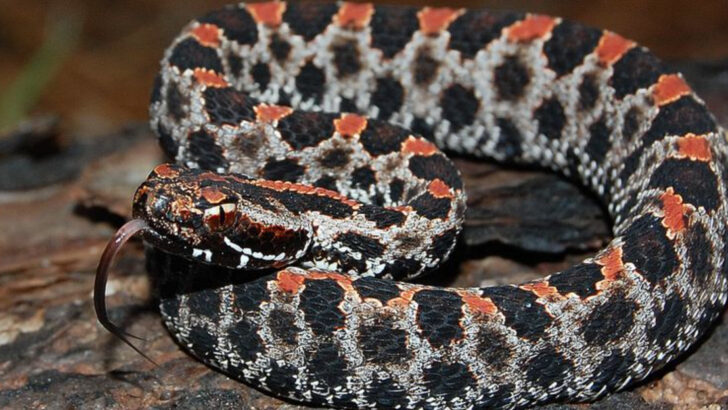The United States is home to some of the deadliest creatures on Earth, and snakes top the list. These venomous serpents slither across diverse landscapes, from scorching deserts to lush swamps, striking fear with their silent, deadly presence.
While many of these snakes play vital roles in the ecosystem, their venom can cause serious harm if encountered. With sharp fangs and potent toxins, they’re not creatures you’d want to meet up close.
In this post, we’ll explore 20 venomous snakes in the U.S. that you’ll want to keep a safe distance from. From the notorious rattlesnake to the elusive copperhead, these reptiles are more than just a danger—they’re a reminder of the wild power that still roams our land. Stay alert, stay safe, and learn to identify these deadly snakes before it’s too late!
Eastern Diamondback Rattlesnake
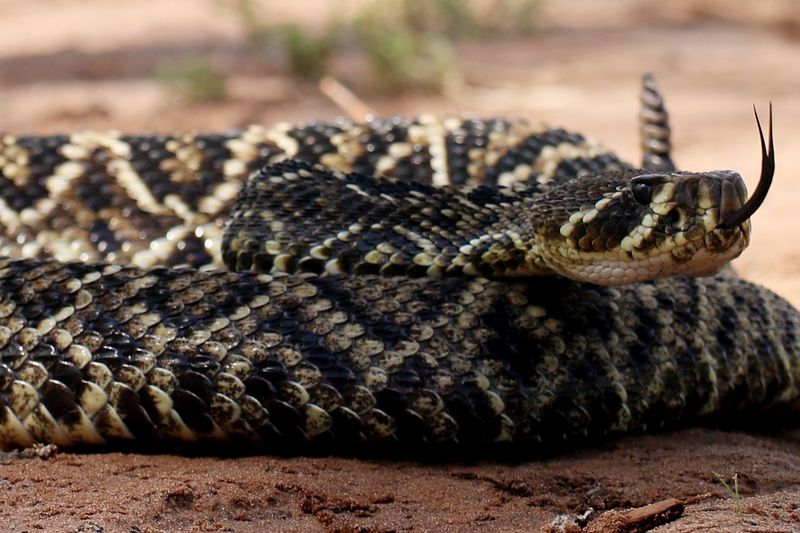
The Eastern Diamondback Rattlesnake is renowned as the largest venomous snake in North America. Found predominantly in the southeastern United States, it thrives in dry, sandy, and pine flatwoods.
Its distinct diamond pattern, outlined in lighter colors, serves as a warning. This snake relies on its rattle to deter threats, a sound that’s both eerie and effective. Despite its intimidating presence, the Eastern Diamondback is not aggressive unless provoked. Respecting its space is crucial.
Remember, their venom can cause severe harm, so it’s best to admire this reptile from a safe distance.
Western Diamondback Rattlesnake
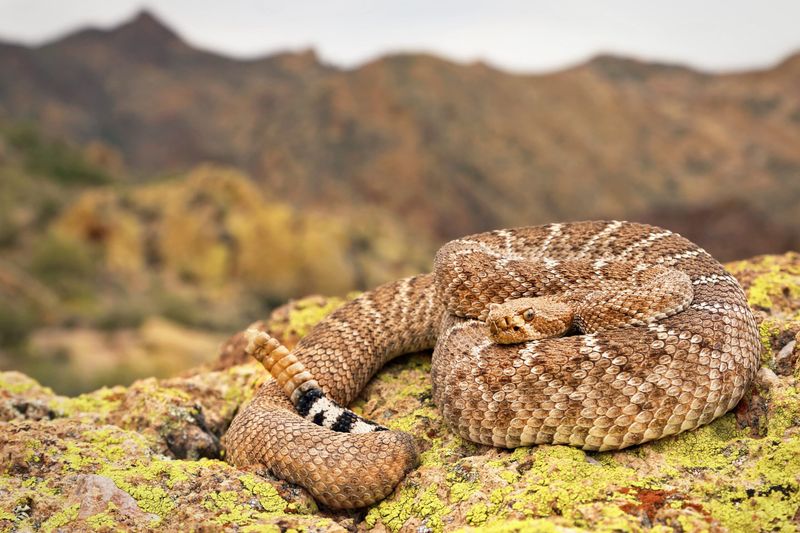
The Western Diamondback Rattlesnake is an iconic species of the American Southwest. Distinguished by its faded diamond pattern, this snake is often found in deserts, grasslands, and forests.
It’s notorious for its defensive nature, using its rattle as a warning signal. The Western Diamondback’s venom contains a potent mix of hemotoxins and neurotoxins, making it highly dangerous. When encountered, it’s prudent to remain calm and back away slowly.
These snakes play a vital role in controlling rodent populations, showcasing their ecological importance despite their fearsome reputation.
Copperhead
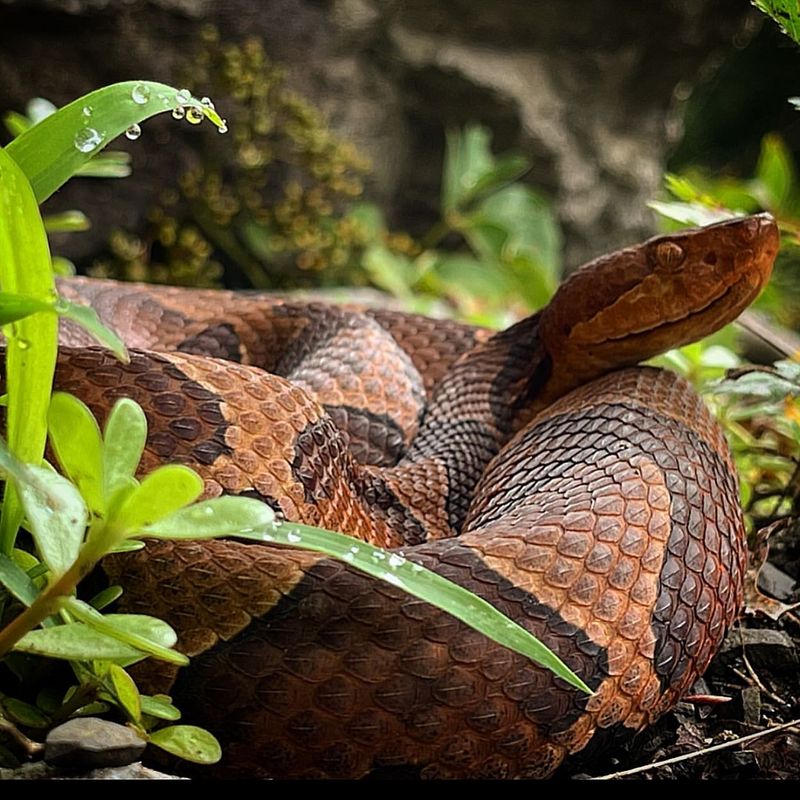
Copperheads are perhaps the most commonly encountered venomous snakes in the United States. Their striking copper-hued bodies offer excellent camouflage among leaves and forest floors.
Preferring wooded areas and rocky outcrops, they remain still when threatened, relying on their camouflage. Although their venom is less potent than some relatives, a bite can still be painful and medical attention is necessary. Copperheads are generally non-aggressive, attacking only when provoked.
Observing their natural behavior from afar allows for a safe and respectful coexistence, reflecting their integral role in the ecosystem.
Cottonmouth (Water Moccasin)
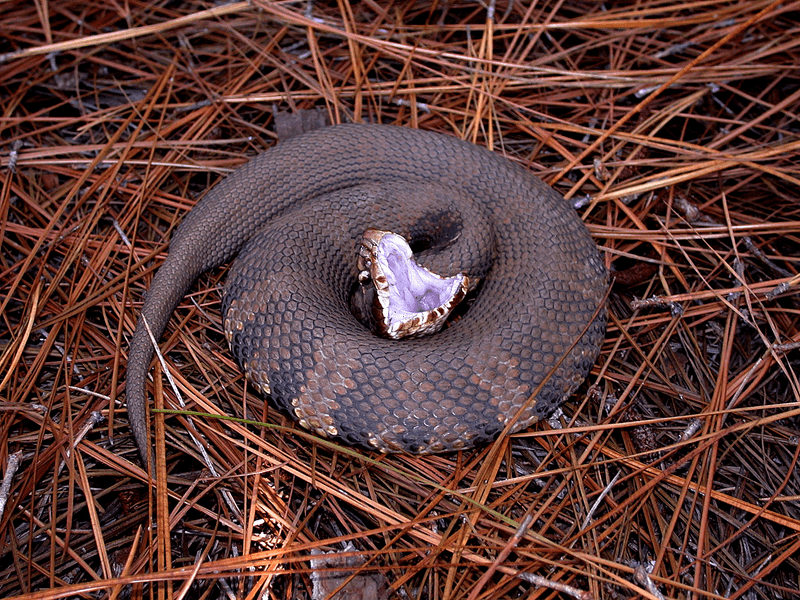
The Cottonmouth, also known as the Water Moccasin, is infamous for its distinctive white mouth interior, shown when threatened. Predominantly found in the southeastern U.S., it inhabits swamps, marshes, and slow-moving rivers.
This semi-aquatic snake has a reputation for aggression, though it often chooses flight over fight when possible. Its venom is a complex blend that can cause significant tissue damage.
Keeping a safe distance and avoiding its habitat during warmer months reduces the risk of encounters. Appreciating from afar ensures safety while respecting their role in controlling aquatic prey populations.
Timber Rattlesnake
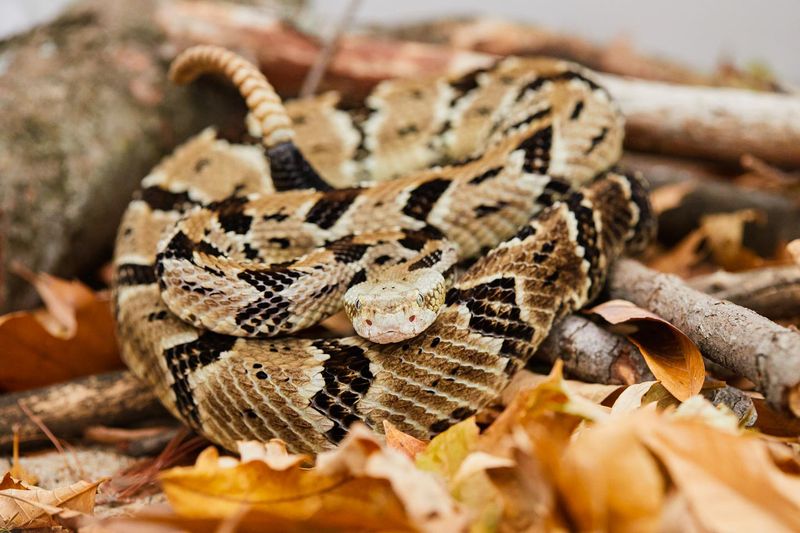
Timber Rattlesnakes are a symbol of wilderness in the eastern U.S., residing in deciduous forests and rocky hillsides. Their camouflage is impeccable, with dark bands on a lighter background, blending seamlessly into forest debris. Known for their relatively docile nature, they prefer to avoid conflict, rattling only when necessary.
However, their venom is potent, causing severe injury if untreated. Observing them in their natural habitat requires caution and respect.
They contribute to controlling small mammal populations, highlighting their ecological significance. Always prioritize safety by keeping a respectful distance during encounters.
Eastern Coral Snake
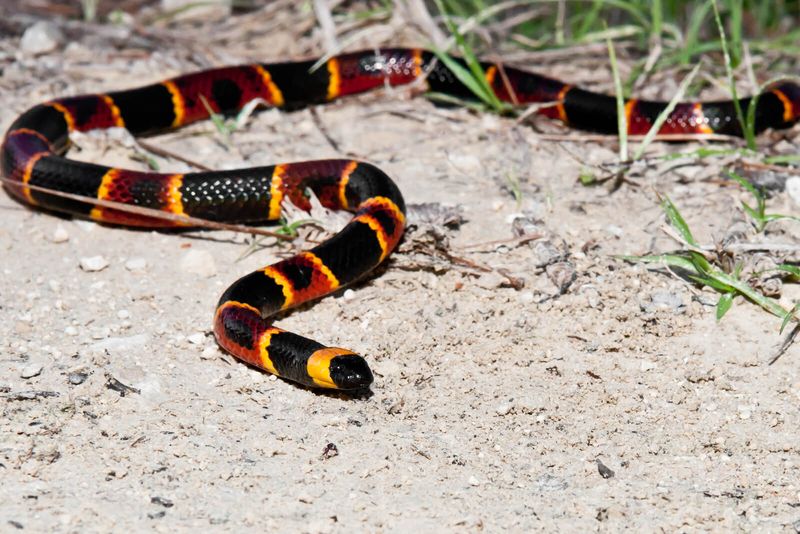
The Eastern Coral Snake, with its vibrant red, yellow, and black bands, is a visual marvel found in the southeastern United States. Often mistaken for non-venomous species, it’s distinguished by its color pattern: red touching yellow spells danger.
This elusive snake prefers hiding under leaf litter and in burrows. Its venom is a powerful neurotoxin, though bites are rare due to its reclusive nature. While beautiful, it’s important to avoid handling or disturbing these snakes.
Their role in the ecosystem as predators of smaller snakes and lizards is crucial, maintaining ecological balance.
Mojave Rattlesnake
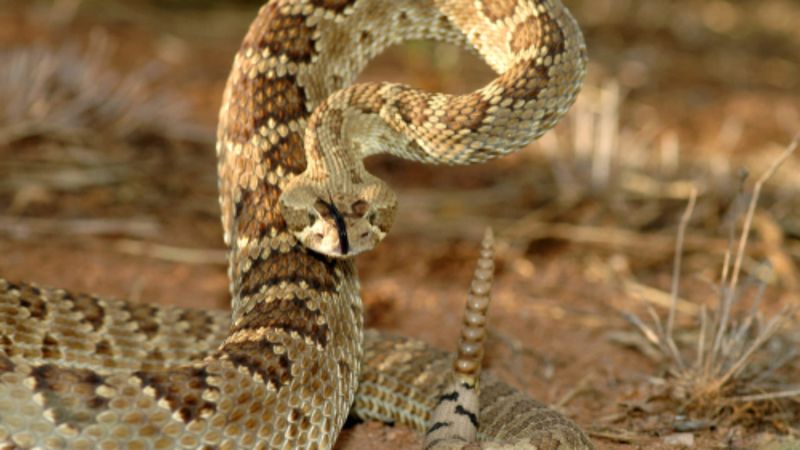
The Mojave Rattlesnake is infamous for having one of the most potent venoms among rattlers. Found in the arid deserts of the southwestern U.S., its greenish hue offers perfect camouflage against sandy backdrops. This snake is known for its variable temperament, sometimes docile, other times defensive.
Its venom contains both hemotoxins and neurotoxins, necessitating immediate medical attention if bitten. Observing them from a safe distance is essential.
Respecting their space reduces risk, emphasizing the importance of awareness in desert environments. Their presence helps control rodent and small animal populations in these arid regions.
Black-tailed Rattlesnake
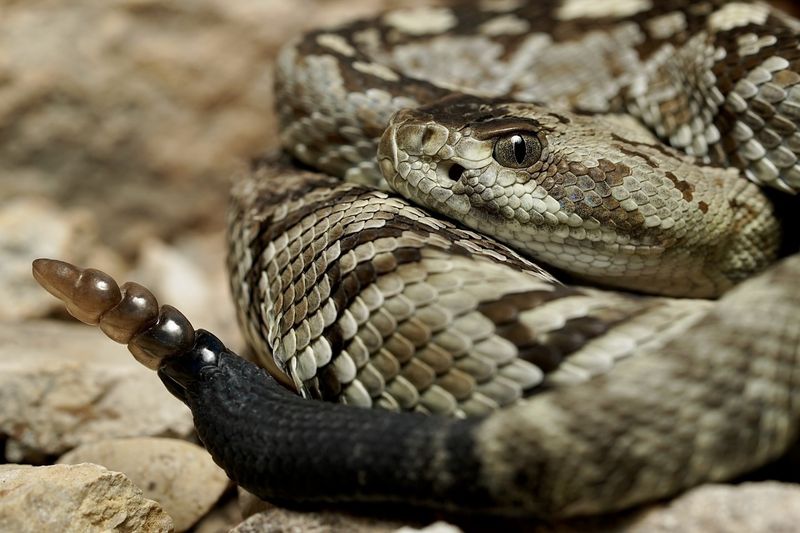
The Black-tailed Rattlesnake is a striking reptile found in the southwestern U.S., particularly in Arizona and New Mexico. Its most distinct feature is its black tail, contrasting with its otherwise muted body colors.
Inhabiting rocky hillsides and desert canyons, this snake is known for its shy demeanor. Although potentially dangerous, it often remains hidden, avoiding human contact.
Its venom can cause significant discomfort, thus any encounter should be treated with caution. Appreciating its beauty from a distance ensures safety. These snakes play a role in their ecosystem by managing populations of small mammals and birds.
Red Diamond Rattlesnake
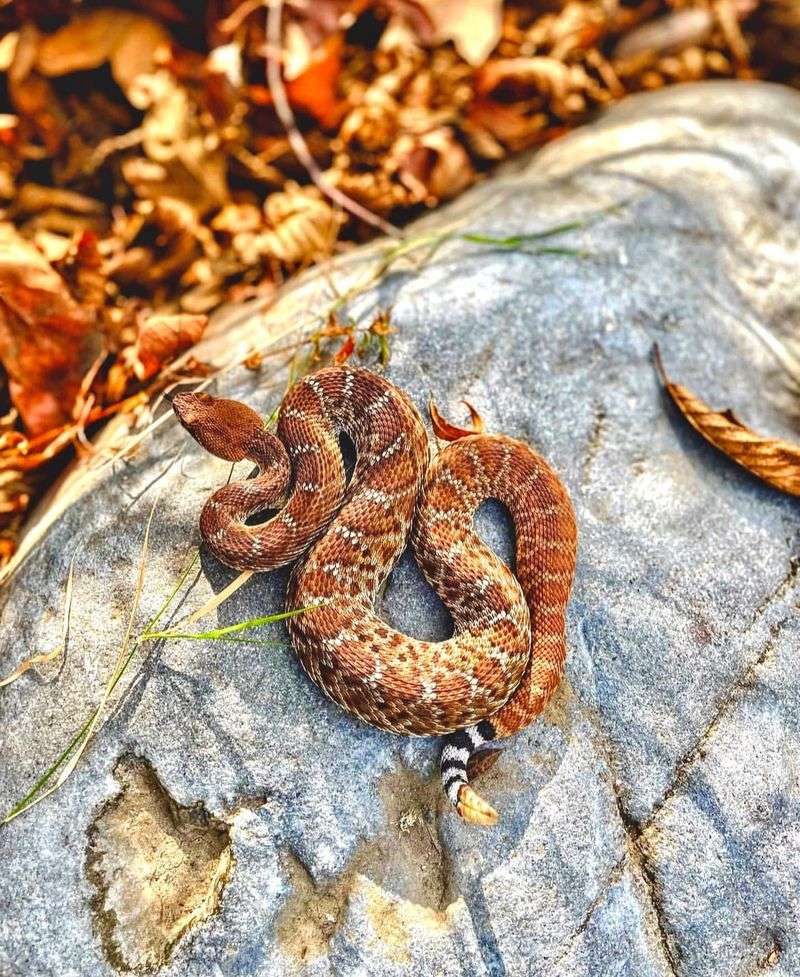
The Red Diamond Rattlesnake, named for its reddish hue and diamond patterns, is native to the southwestern U.S., particularly California.
Preferring coastal and inland scrublands, this snake is less aggressive than some of its relatives. Its venom, while not the most potent, still poses risks, causing pain and swelling.
The Red Diamond’s calm nature means it often retreats rather than confronts. Observing these snakes in their natural habitat can be fascinating, provided a safe distance is maintained. Their ecological role as predators of rodents and birds underlines the importance of their presence in the environment.
Sidewinder Rattlesnake
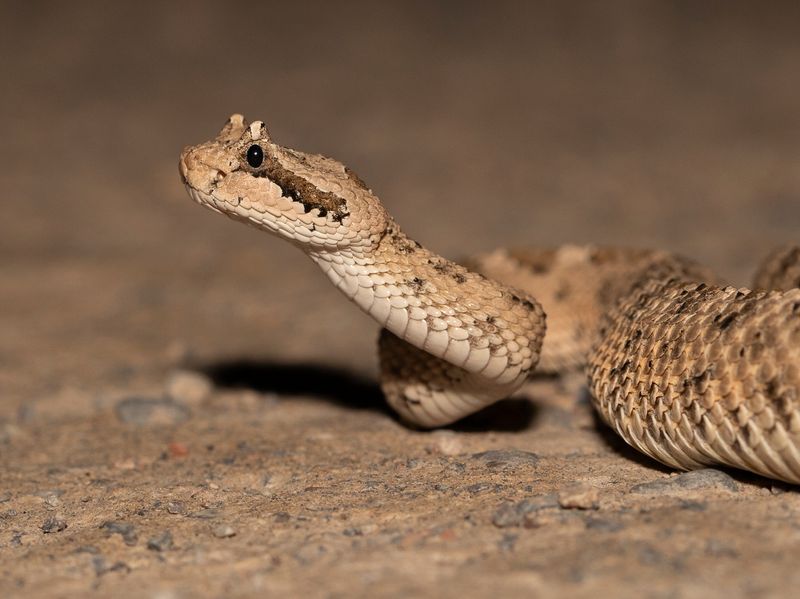
The Sidewinder Rattlesnake, also known as the Horned Rattlesnake, is infamous for its unique sideways slithering motion, which allows it to move efficiently across the sandy deserts of the southwestern United States. This distinct movement helps the snake avoid overheating and conserve energy under the scorching sun.
Growing up to 30 inches, this rattlesnake is equipped with a pair of horns above its eyes, providing a menacing appearance. These horns are not just for show; they help the snake burrow and protect its eyes from sand. Though venomous, the Sidewinder’s bite is rarely fatal to humans, but it should still be taken seriously.
If encountered, it’s best observed from a distance. While fascinating to watch as it glides across the desert, keep your distance and always be aware of your surroundings, especially when hiking in arid regions.
Rock Rattlesnake
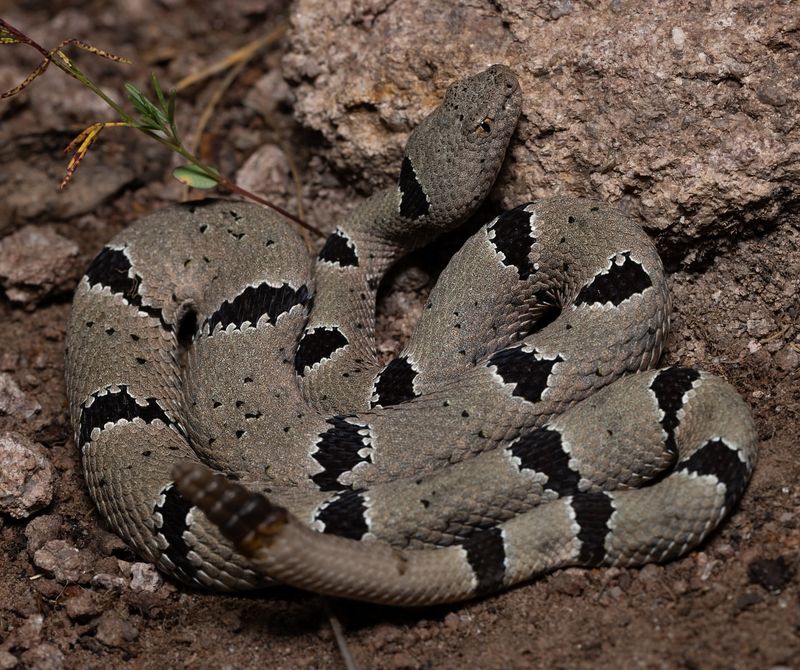
The Rock Rattlesnake, found in the rocky slopes of the southwestern U.S., is a testament to nature’s camouflage. Its speckled gray and brown pattern makes it virtually invisible against a backdrop of rocks and debris.
Despite its small size, the Rock Rattlesnake packs a venomous punch. It tends to be more active at night, hunting small mammals and lizards. With a preference for solitude, it rarely ventures into areas with heavy foot traffic.
If encountered, it’s best to observe from a distance. The Rock Rattlesnake’s bite can cause localized pain and swelling, so medical attention should be sought immediately. Wearing protective clothing is recommended when exploring rocky terrains.
Prairie Rattlesnake
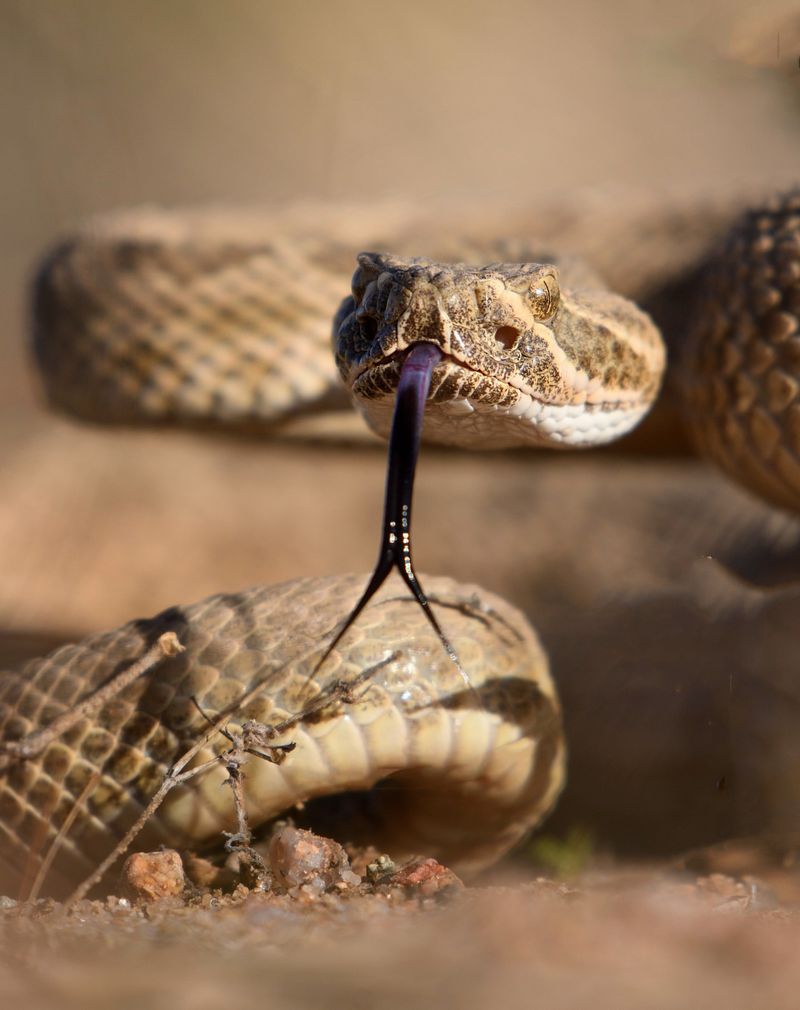
The Prairie Rattlesnake is a common inhabitant of the western U.S., thriving in grasslands and prairies. Its light brown body with darker rings provides excellent camouflage in its natural habitat.
Known for their adaptability, these rattlesnakes can also be found in desert and forest environments. Their venom is potent, capable of causing significant medical issues if untreated. Despite this, they are generally non-aggressive, warning intruders with their rattle before considering a strike.
Observing from a safe distance allows one to appreciate their role in controlling pest populations, while also maintaining safety.
Massasauga
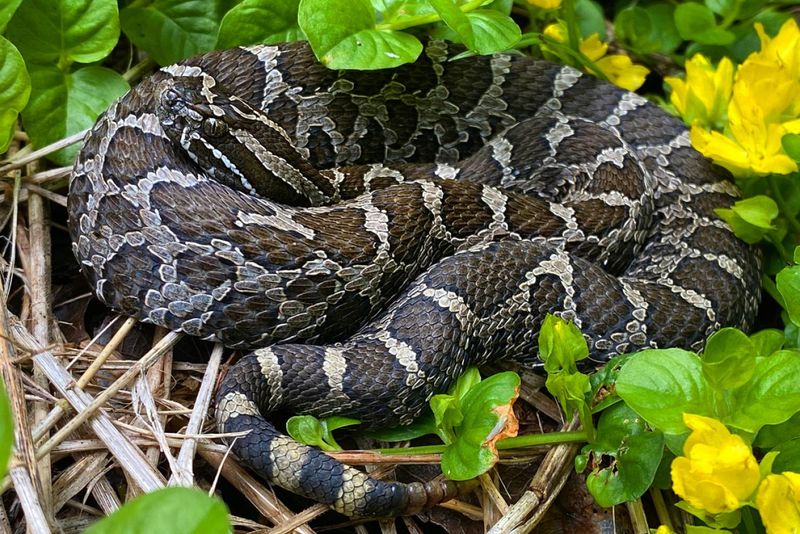
The Massasauga is a smaller rattlesnake species found primarily in wetland areas of the Midwest. Its name means ‘great river mouth’ in Chippewa, reflecting its preferred habitat.
This snake is easily recognized by its thick body and distinctive rattle. Although its venom is less potent compared to larger rattlesnakes, it should still be respected and medical help sought if bitten.
Massasaugas are generally shy, using camouflage to avoid detection. They play an important role in controlling small mammal populations, thus maintaining ecological balance. Observing them from a distance ensures both safety and respect for their habitat.
Southern Pacific Rattlesnake
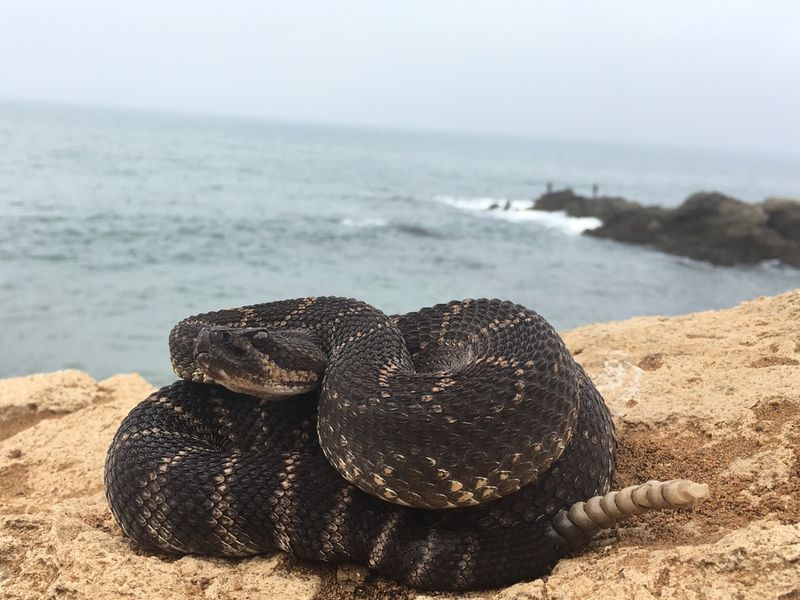
The Southern Pacific Rattlesnake is predominantly found in California and Baja California. Known for its potent venom, this snake prefers rocky areas and can often be seen basking in the sun. Its distinctive rattle serves as a warning to potential threats, making it one snake hikers should be wary of.
Characterized by a striking diamond pattern, this rattlesnake blends well with its surroundings. Despite its fearsome reputation, it often avoids human contact, striking only when threatened. Those encountering this snake should maintain a safe distance and slowly back away.
While bites are rare, they can lead to severe pain and swelling. It’s advisable to seek immediate medical attention if bitten. Wearing thick boots and sticking to clear paths can minimize risk during hikes.
Pygmy Rattlesnake
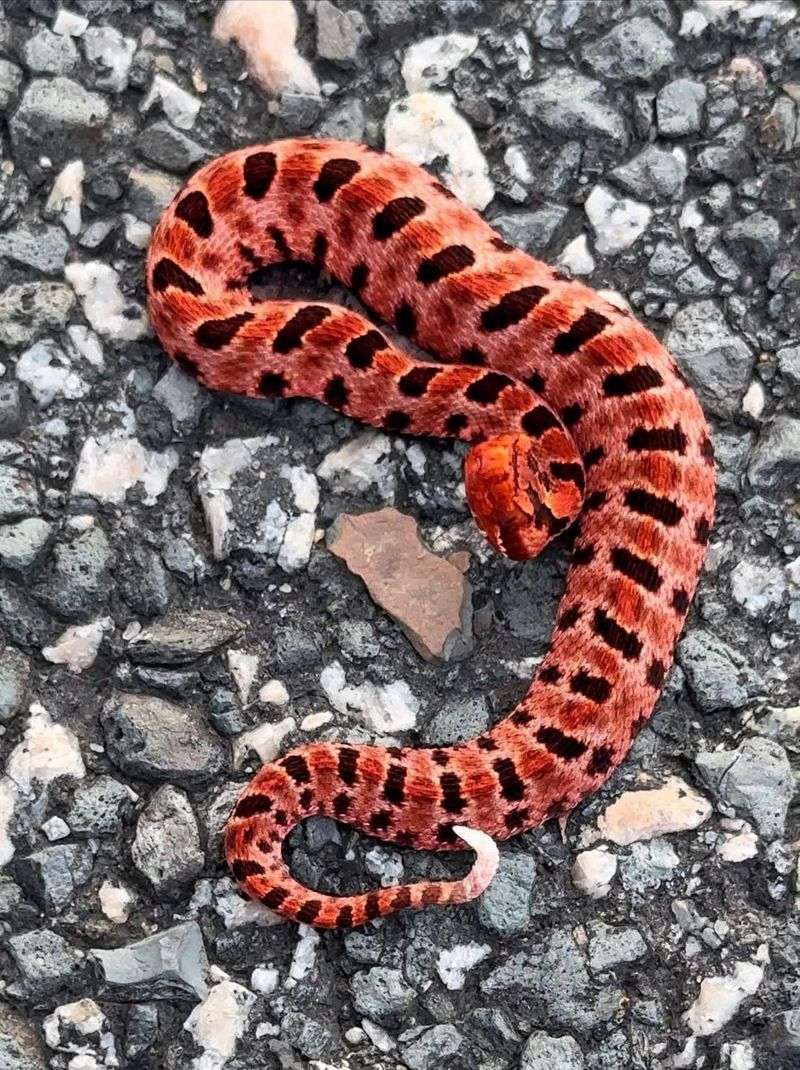
The Pygmy Rattlesnake, one of the smallest rattlesnake species, inhabits the southeastern U.S., particularly in wooded and grassy areas. Despite its diminutive size, its presence is formidable, especially when threatened.
The pygmy’s rattle is so faint it often goes unheard, posing a hidden danger. Its venom, while not as potent as larger relatives, requires medical attention upon a bite.
Its cryptic coloration provides excellent camouflage against forest floors, making it difficult to spot. Observing these snakes in their natural habitat is best done with caution, ensuring a respectful distance is maintained.
Arizona Black Rattlesnake
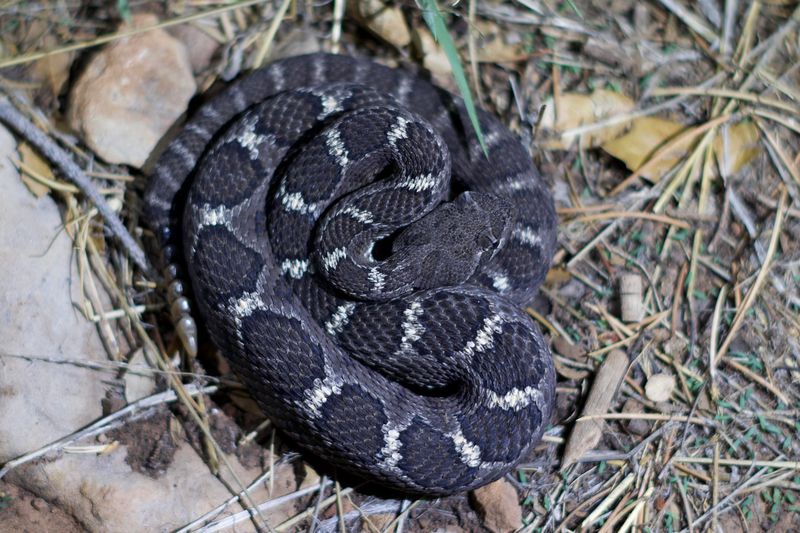
The Arizona Black Rattlesnake is an intriguing species found in the mountainous regions of Arizona. Its glossy black body helps it absorb heat efficiently, vital for its survival in cooler, high-altitude environments.
Known for its varying temperament, this snake can be both calm and defensive. Its venom is hemotoxic, causing significant damage if untreated.
Observing this snake from a safe distance is crucial due to its potential danger. Despite their fearsome reputation, Arizona Black Rattlesnakes are vital in controlling populations of small mammals and reptiles, highlighting their ecological importance.
Dusky Pygmy Rattlesnake
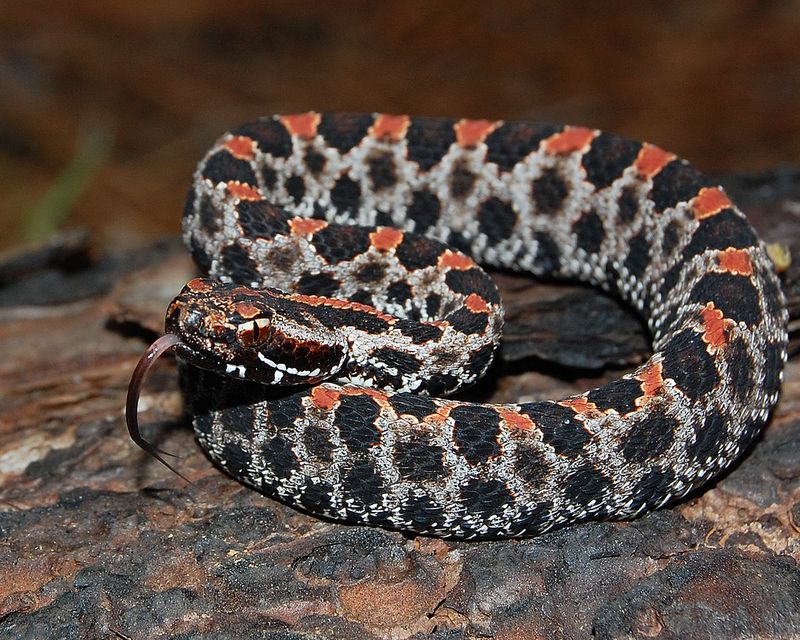
The Dusky Pygmy Rattlesnake, a diminutive predator, is found in the southeastern U.S., especially in Florida.
Its speckled gray body offers perfect camouflage against forest floors and mudflats. Despite its small size, this snake possesses a potent venom, making its bite painful and requiring medical attention. The Dusky Pygmy is generally shy, relying on its camouflage to avoid encounters.
Observing these creatures requires a keen eye and respect for their space. They play a crucial role in controlling insect and small vertebrate populations, contributing to the ecological balance of their habitats.
Northern Cottonmouth
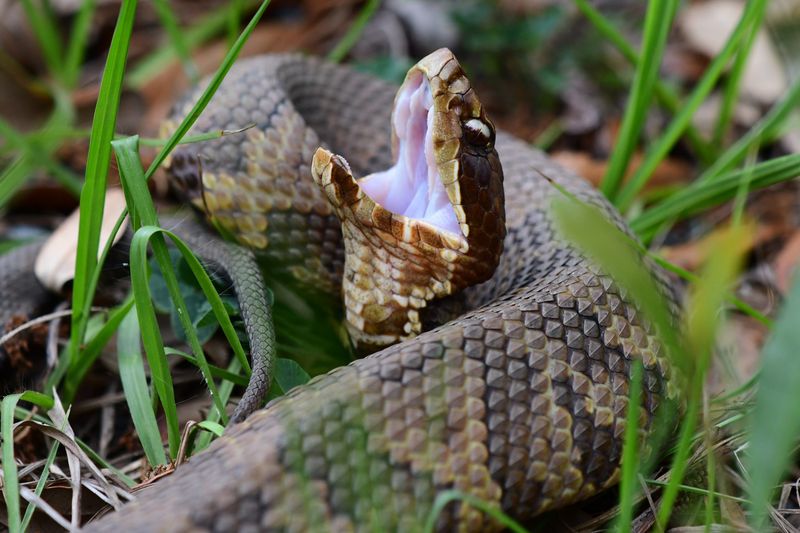
Similar in behavior and appearance to its western cousin, the Northern Cottonmouth is another intriguing yet potentially dangerous snake. It’s found in the eastern parts of the U.S., inhabiting wetlands and floodplains.
The Northern Cottonmouth shares the same intimidating mouth-gaping threat display and is known for being territorial. Its venom, while rarely fatal, can cause serious medical issues if left untreated. The snake’s natural curiosity can sometimes lead to closer encounters with humans.
To avoid any mishaps, stay alert and cautious when near water bodies. Respect their space and avoid any sudden movements if you spot one nearby.
Sonoran Coral Snake
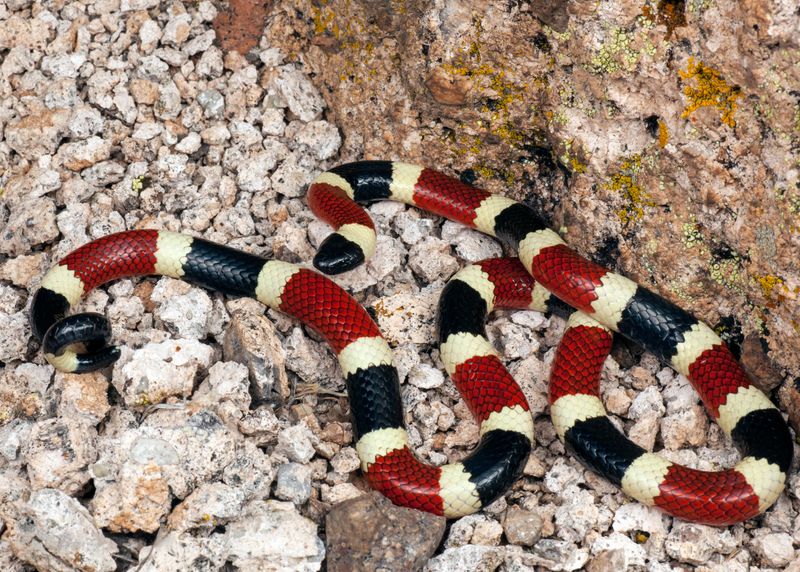
The Sonoran Coral Snake, another member of the coral snake family, inhabits the arid regions of the Sonoran Desert. It’s smaller than its relatives but equally dangerous due to its potent venom.
Typically nocturnal, this snake avoids human interaction, making it a rare sight. However, those venturing into its territory should remain cautious, especially at night. Its vivid coloration and the familiar band pattern serve as a warning to potential predators and humans alike.
Desert Nightshade Viper
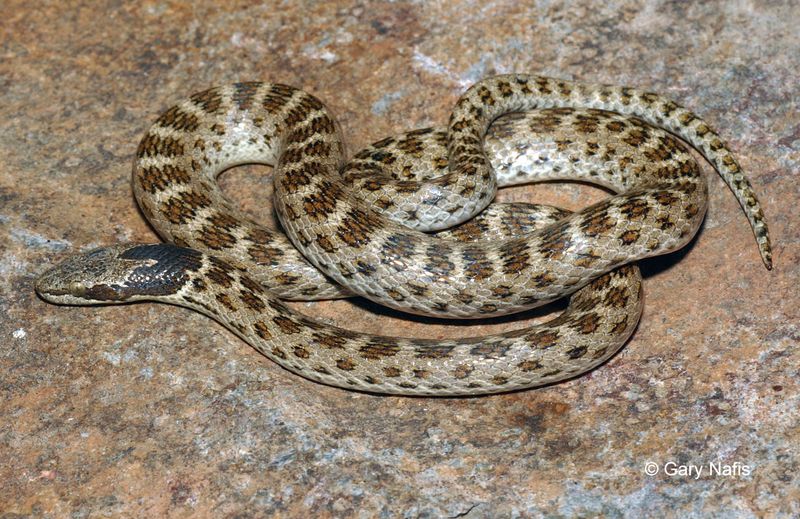
The Desert Nightshade Viper is a mesmerizing yet formidable snake that lurks within the shadows of the Sonoran Desert. Its iridescent purple scales glisten under the moonlight, creating an almost ethereal glow. Despite its beauty, this snake is not to be trifled with.
With venom potent enough to incapacitate small mammals instantly, the Nightshade Viper strikes swiftly and unpredictably. Its slender body and sharp fangs are engineered for precision. Though human encounters are rare, caution remains essential.
When trekking through its habitat, keep an eye on the ground and avoid disturbing rocks or crevices where it may hide.

